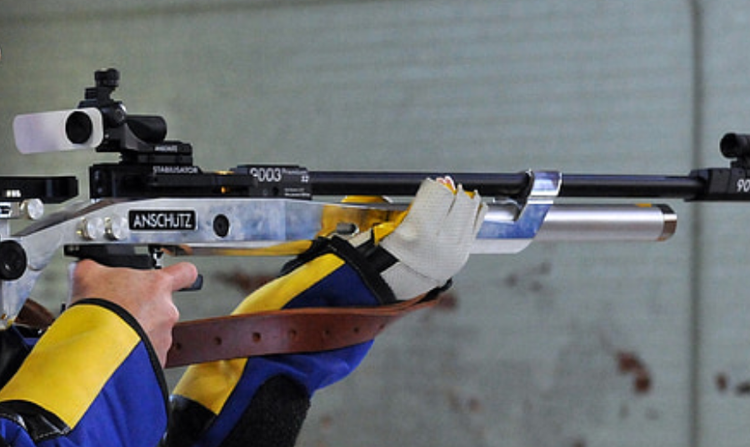In today's modern era of firearms, it may seem that rifle slings have fallen out of favor, with many shooters opting to transport their guns in bags and cases. However, the rifle sling is an age-old accessory that has been used for centuries to stabilize shots and improve shooting performance. Understanding the benefits and techniques of using a rifle sling can greatly enhance your shooting experience, whether you are at the range, engaging in tactical competitions, or out in the field hunting.
The Origin and Evolution of Rifle Slings
The concept of using a leather strap to carry a rifle dates back to the late 17th century, when European musketeers first began attaching slings to their matchlocks, which were previously always carried on their shoulders like an axe or a pike. As firearms evolved and became more portable, every man with a firelock carried his weapon with a sling, whether it was the soldier on a long march or the frontiersman on a months-long expedition in the wilderness.
Throughout the 18th and 19th centuries, slings were particularly favored by light infantry for steadying shots in the Creedmoor position. Also known as the “back position” or "dead man's aim," this shooting method, unorthodox by today’s standards, involved the shooter lying on his back or on his rucksack, while bracing his sling against his boot and resting his rifle’s buttstock on his belly. Using the rifle sling on his foot, the shooter could, in theory, absorb the rifle’s recoil with his entire body.

Notable historical accounts highlight the effectiveness of this technique. In 1776, Captain Patrick Ferguson, a Scotsman, used a breech-loading flintlock rifle and reportedly hit a bullseye at a hundred yards while utilizing the Creedmoor position. Another remarkable incident involved Private Thomas Plunket, who used the same position to kill French General Colbert from an estimated distance of 200 to 300 yards.
More than just a handle
A rifle sling offers much more than a means to carry your firearm while keeping your hands free. When properly utilized, a sling can greatly improve stability and accuracy during shooting. Understanding the various techniques for using slings can make a noticeable difference in your shooting performance.
For slings with a wide enough loop from the adjustment, they can be used to brace the support arm in the kneeling position by bringing the sling to the armpit. When kneeling, this technique provides four points of contact with the rifle (shoulder, knee, elbow, sling) and allows increased stability. This can also work standing. Tension on the sling can be controlled using the elbows, with flared elbows making it tighter or compressed elbows making it looser. It's worth noting that this technique is not applicable to single-point tactical slings, which have a different design and purpose.

For tactical-style shooting, particularly in close to mid-range engagements and three-gun competitions, a single-point sling may be the preferred choice. Single-point slings allow for quick and effortless transitions between weapons, and people who prefer using single point slings often use them with some sort of support such as an integrated Velcro strap on their vests to help hold their rifles, since running with a single point sling should not be done without some sort of support.
In the case of shorter two-point slings where the rifle is slung over the back, steadying the firearm can be achieved by bracing the wrist against the sling. This method enables shooters to maintain control and stability while also facilitating a smooth transition to a handgun if needed, without having to completely drop the primary weapon.

When selecting a sling, it's important to consider the specific shooting applications you have in mind. Different slings offer distinct advantages depending on the shooting style, range, and activities you engage in.
On the other hand, if your shooting activities involve hunting or longer-range engagements, a two-point sling might be more suitable. Two-point slings provide enhanced stability, distribute the weight of the firearm evenly, and offer more versatility in terms of carrying positions.
When it comes to rifle slings, Firefield is a trusted name in the industry, offering a range of high-quality options designed to meet the diverse needs of shooters. Firefield slings are crafted with durability, functionality, and user comfort in mind, ensuring that you have a reliable accessory that will enhance your shooting experience.
Whether you require a single-point sling for tactical competitions or a two-point sling for hunting adventures, Firefield has you covered. With their commitment to excellence and innovation, Firefield slings provide the stability and support you need to take your shooting skills to the next level.
In conclusion, while it may seem that rifle slings have become less prevalent in today's shooting culture, their historical significance and practical advantages cannot be overlooked. By utilizing a rifle sling properly, you can significantly improve stability, accuracy, and overall shooting performance. When seeking a reliable and effective sling, consider Firefield for their exceptional quality and commitment to meeting the needs of shooters in various contexts. Embrace the timeless accessory of the rifle sling and experience the benefits it offers to elevate your shooting prowess.

